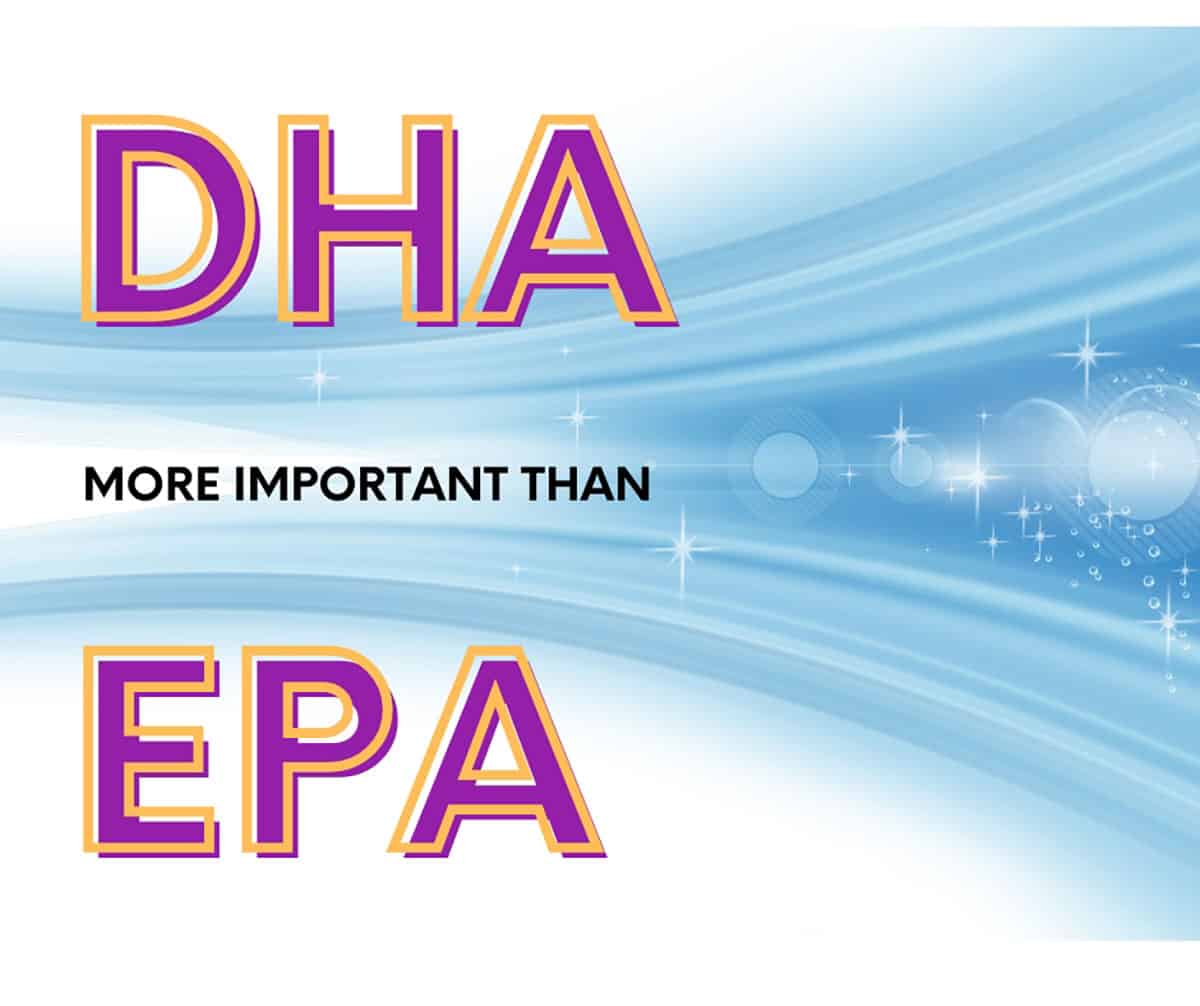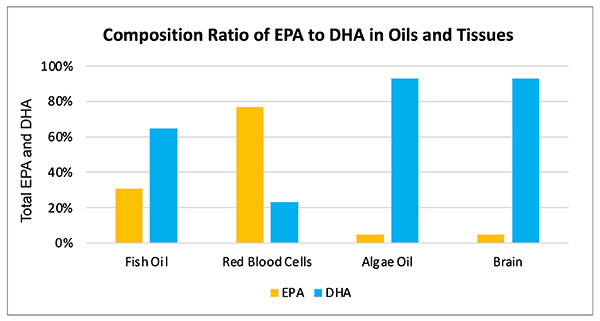
Why is High EPA Unnecessary?
There is the argument that you get a higher level of Omega-3 EPA when you take fish oil which is used as a selling point by the manufacturers of fish oil (or algae oil that has been genetically engineered to have a DHA/EPA ratio similar to fish oil). However, high EPA is unnecessary due to the fact that DHA can be converted to EPA by the body when it is required.
High EPA is Natural in Fish, but not in Algae or Humans
The human red blood cells all naturally carry an EPA/DHA level that has 3 to 8 times more DHA than EPA. Fish oil tissue carries an EPA/DHA level that equates to nearly 2 times DHA than EPA. That is natural for fish, but not humans and the higher level of EPA in fish oil is a result of the fish processing the microalgae they eat.
According to scientist, Scott Doughman, PhD., “The summary of the studies detailed later in this article, suggest ‘directional Omega-3 metabolism’, where fish oil moves the opposite direction to algae oil in conversion.”
Dr Doughman continued, “With fish oil, EPA intake leads to multistep synthesis to DHA. With algae oil, DHA intake leads to a single step retro-conversion to EPA. The body knows how to balance its final levels from each direction, but the retro-conversion to EPA that algae oil offers, appears more efficient at high Omega-3 doses.”
In summary, Dr Doughman concluded, “Therefore, there is no nutritional reason for algae oil to have more EPA, other than to be like fish oil. Human digestion converts the DHA/EPA ratios in any of these oils to its own inherent ratios. Starting ratio is relatively insignificant from a nutritional perspective. Algae oil studies show the high DHA algae oil is equivalent and sometimes superior to fish oil in tissue function, metabolism and benefits due in part to the ease of converting 5% DHA into EPA in just the right amounts, according to what the body needs and how it is made.”
Algae Oil that contains a high level of EPA (nearly 1⁄2 the DHA level) indicates that it has been genetically engineered.
Find more information on Genetically Engineered Algae > click here
The following graph shows DHA is naturally the most abundant Omega-3 form in the human body and blood in comparison to EPA levels. This data is supported by composition studies conducted in 1978 in untreated individuals (Sanders et al., 1978).

Interestingly, a later review of individuals that were treated with fish oil Omega-3s revealed higher DHA fatty acid composition in red blood cells compared to EPA, despite high EPA intake (Herold and Kinsella,1986), justifying DHA’s claim to the being the dominating and ‘Master Omega’.
Fish oils have been an abundant source of EPA, and because EPA was the main Omega-3 given as a fish oil treatment, fewer studies may have taken into consideration that DHA is the most prominent Omega-3 long chain fatty acid.
In a very detailed study on human treatment with algae oil DHA, the authors found the blood Omega-3 parameters were consistent with individuals who were taking high dosages of fish oil (Conquer and Holub, 1996).
According to another study, EPA levels rise with DHA dosing, though notably, DHA levels never
rise with EPA dosing (Brenna JT, Salem N Jr., Sinclair AJ, Cunnane SC, 2009).
Docosahexaenoic acid (DHA) is particularly prevalent in the brain and can be retro-converted to eicosapentaenoic acid (EPA) serving as a generator of EPA. (Nutrients 2020, 12, 2333; doi:10.3390/nu12082333).
Explore further > click here


